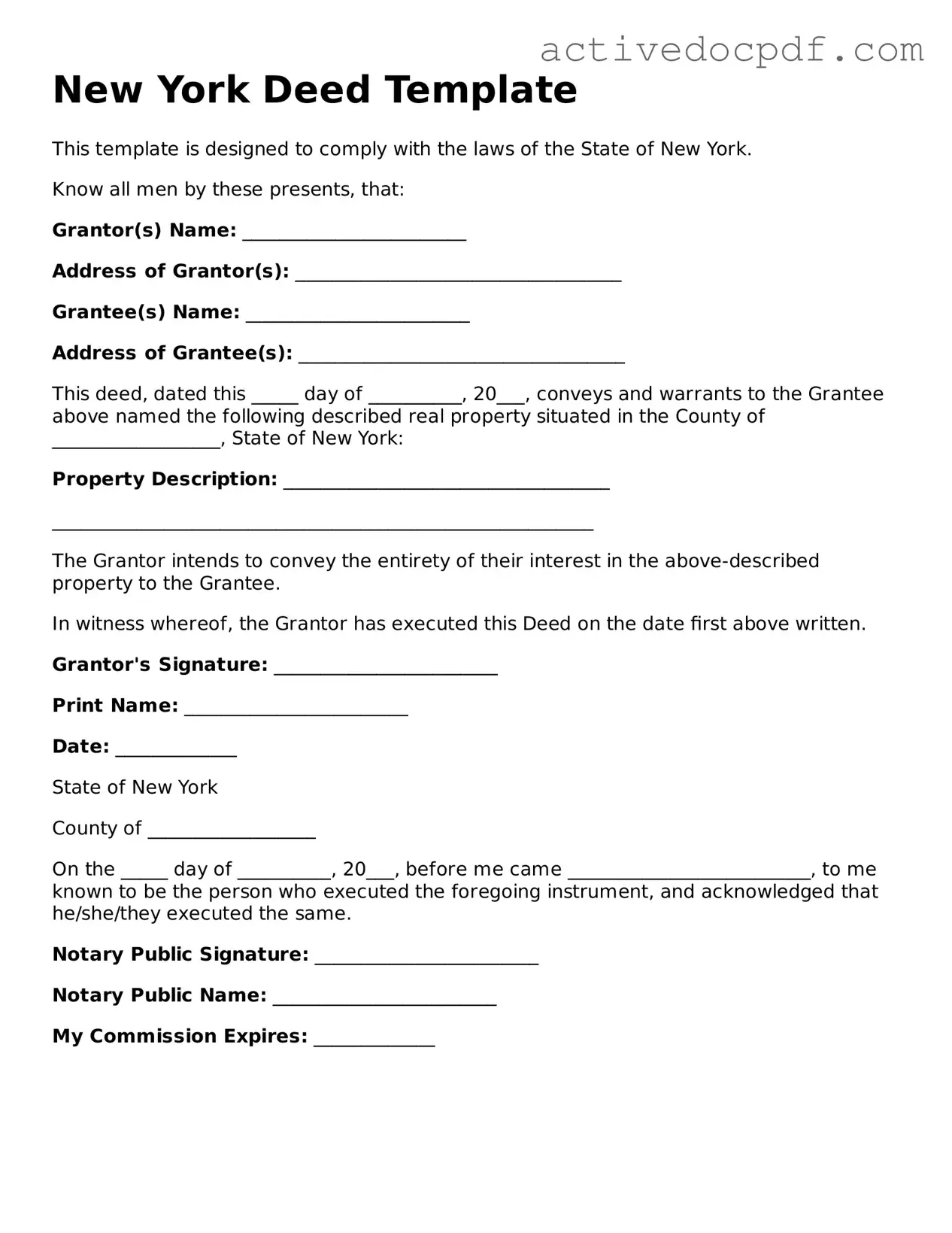A New York Deed form is a legal document used to transfer ownership of real property from one party to another within the state of New York. This form serves as proof of the transaction and outlines the details of the transfer, including the names of the parties involved, a description of the property, and any terms or conditions associated with the transfer.
What types of Deeds are available in New York?
In New York, there are several types of Deeds that can be used, including:
-
Warranty Deed:
Guarantees that the grantor holds clear title to the property and has the right to transfer it.
-
Quitclaim Deed:
Transfers any interest the grantor has in the property without making any guarantees about the title.
-
Special Warranty Deed:
Similar to a warranty deed, but only guarantees the title against claims arising during the grantor's ownership.
-
Deed in Lieu of Foreclosure:
Used when a property owner voluntarily transfers the property to the lender to avoid foreclosure.
The New York Deed form must be signed by the grantor, who is the person transferring the property. In some cases, the grantee, or the person receiving the property, may also be required to sign. Additionally, the signatures should be notarized to ensure the document is legally binding.
To fill out a New York Deed form, follow these steps:
-
Begin by entering the names and addresses of both the grantor and grantee.
-
Provide a legal description of the property being transferred. This can usually be found in the property's existing deed or tax records.
-
Include any terms or conditions related to the transfer, if applicable.
-
Sign and date the form in the presence of a notary public.
Yes, while it is not mandatory to record a New York Deed form, it is highly recommended. Recording the deed with the county clerk's office protects the new owner's rights and provides public notice of the property transfer. This helps prevent future disputes regarding ownership.
Filing fees for a New York Deed form can vary by county. Generally, there may be a nominal fee for recording the deed, as well as possible transfer taxes. It is advisable to check with the local county clerk’s office for specific fee amounts and any additional costs that may apply.
While it is possible to create your own New York Deed form, it is recommended to use a standardized form or seek legal assistance. Ensuring that the deed complies with state requirements is crucial to avoid potential issues in the future. Consulting with a legal professional can provide peace of mind and help navigate the complexities of property transfers.
